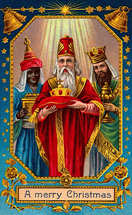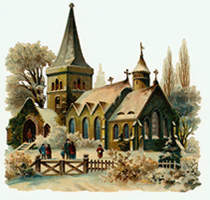When
it comes to celebrating the New Year it seems that everyone has their
own peculiar way of doing things. Some people throw bread, others
burn scarecrows, and still others fist fight for good luck. These are
some of the strangest New Year’s traditions I have found from
researching New Years Eve on the internet, from around the world.
Broken Plates (Denmark)
In
Denmark they save all of their unused dishes and plates until the
31st of December when they affectionately shatter them against the
doors of all their friends and family.
Scarecrow Burning (Ecuador)
In
Ecuador they celebrate the New Year by burning paper filled
scarecrows at midnight. They also burn photographs from the last
year. All in the name of good fortune.
Eating 12 Grapes (Spain)
In
Spain, if you can manage to stuff 12 grapes in your mouth at midnight
you’ve achieved good luck for the next year.
Round Things (Philippines)
In
the Philippines it’s all about the cash. They believe that
everything should be round so as to represent coins and bring wealth.
Round food, round clothes, as long as it’s round.
Coloured Underwear (South America)
In
some South American countries wearing coloured underwear will
determine your fate for the new year. Red underwear means you’ll
find love. Gold means wealth, and white signifies peace.
108 Rings (Japan)
In
Japan they ring all of their bells 108 times in alignment with the
Buddhist belief that this brings cleanness. It’s also considered
good to be smiling going into the New Year as it supposedly brings
good luck.
Takanakuy Festival (Peru)
Every
year at the end of December people in this small Peruvian village
fist fight to settle their differences. They then start the year off
on a clean slate.
Dropping Ice cream (Switzerland)
In
Switzerland they celebrate the New Year by dropping ice cream on the
floor.
Coin Tossing (Romania)
In
Romania they throw their spare coins into the river to get good luck.
Water Buckets (Puerto Rico)
In
some parts of Puerto Rico they throw pails of water out of their
windows to drive away evil spirits.
Don't Forget The Cows (Belgium)
In
Belgium they take their livestock seriously. At least seriously
enough that the farmers wish their cows a happy new year!
Sweet Coins (Bolivia)
In
Bolivia coins are baked into sweets and whoever finds the coins has
good luck for the next year.
Pancakes (France)
The
French like to keep things simple and delicious. Every new year they
consume a stack of pancakes.
Suitcases (Colombia)
In
Colombia they carry their suitcases around with them all day in hopes
of having a travel filled year.
High Jump (Denmark)
In
Denmark people climb on top of chairs and literally “jump” into
the New Year to bring good luck.
Talc Smearing (Thailand)
Besides
throwing buckets of water on each other in Thailand they also go
around smearing each other with grey talc.
Cemetery Sleepover (Chile)
In
Chile families spend the night in the company of their deceased loved
ones by sleeping at the cemetery.
Animal Whispering (Romania)
Just
like in Belgium, Romanian farmers try to communicate with their cows.
If they succeed, however, then it means bad luck for the year.
Bread Power (Ireland)
In
Ireland they hit the walls with bread to get rid of evil spirits
Furniture Disposal (South Africa)
In
some parts of South Africa they throw furniture out the window
Frozen Trunks (Siberia)
Just
as you might expect, in Siberia they jump into frozen lakes carrying
tree trunks
Metal Casters (Finland)
In
Finland people predict the coming year by casting molten tin into a
bucket of water and interpreting the resulting shape.
Effigy Burning (Panama)
In
Panama effigies of everyone and anyone famous are burned as a way to
start the new year off with good luck
First-Footing (Scotland)
In
Scotland the first person to cross the threshold of a home in the new
year should carry a gift for good luck.
Eating For Abundance (Estonia)
In
Estonia people eat seven times on new years day to ensure abundance
in the new year.





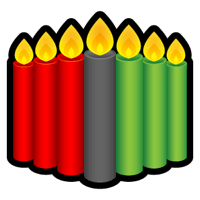
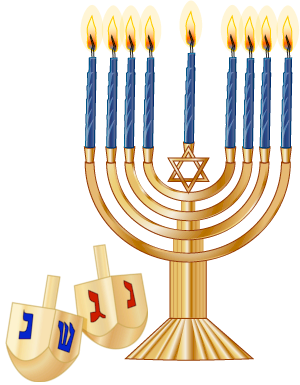




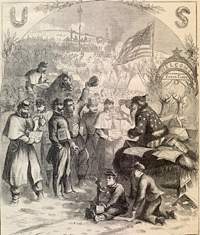 St.
Nicholas in Harper's Weekly: January 1863
St.
Nicholas in Harper's Weekly: January 1863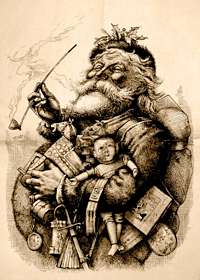 St.
Nicholas in Harper's Weekly: January 1881
St.
Nicholas in Harper's Weekly: January 1881


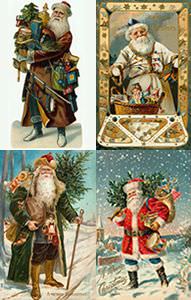
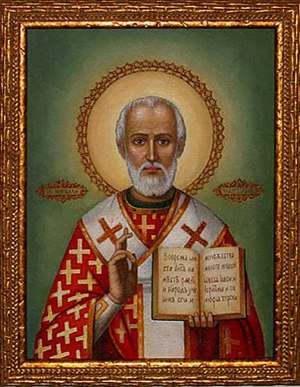 Image
from the St. Nicholas Center
Image
from the St. Nicholas Center



